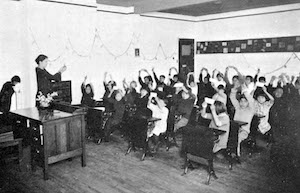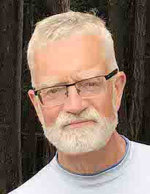Researcher defends residential schools
- RICHARD FOOT
Indian residential schools were not the forces of cultural destruction they are widely portrayed to have been and the government would be wrong to compensate thousands of former students who allege the schools cost them their families, language and heritage, says a researcher for the United Church of Canada.
 John Siebert, the United Church's former program officer of human rights and aboriginal justice, has spent the past six years reading residential school records now archived at the Department of Indian Affairs.
John Siebert, the United Church's former program officer of human rights and aboriginal justice, has spent the past six years reading residential school records now archived at the Department of Indian Affairs.
He says documents and statistics prove residential schools were part of a decades-old federal policy to help Indians, not to assimilate them, by requiring that native children, like their white counterparts, attend school.
Mr. Siebert says other factors such as television are more likely to blame for the loss of native culture than residential schools.
"For the federal Crown to compensate plaintiffs for broad issues of cultural loss because of the small minority of status Indians who attended residential schools would be nonsensical," he says.
Factors such as the loss of the buffalo hunt on the prairies, the devastation to the fur trade in northern Ontario and the impact of forced relocation on to tiny reserves likely also played a part, he said.
Mr. Siebert first began scouring historical documents to help lawyers defend the United Church against lawsuits stemming from the Church's role in operating schools on contract for the government. He is now compiling records and statistics for a book on the subject.
He says contrary to popular belief, most native Canadians never entered a residential school. Numbers from Indian Affairs annual reports show an average of 7,100 native students attended residential schools each year between 1890 and 1965, compared to an annual average of 11,400 who attended day schools over the same period.
Of the 40,637 natives enrolled in government schools across Canada in 1960, only 9,109 were in residential schools compared with 22,049 in federal day schools and another 9,479 in regular, provincial public schools.
The federal government is being sued by 7,258 former residential school students.
Almost every lawsuit alleges a variety of suffering, from forcible confinement and loss of language to loss of family ties and forced religious indoctrination. Ninety per cent of all claims also allege sexual or physical abuse. A small number of these cases have already been validated by the criminal conviction of a sexual abuser.
Mr. Siebert is clear: "Sexual abuse and gross physical abuse those are sins and crimes, they are torts in civil litigation and they will be addressed ... But if residential schools are a train, I don't think you can load that train with all the baggage of cultural loss. They weren't even the major educational vehicle for most people."
Mr. Siebert says it is wrong for native plaintiffs to complain that they were torn from their families and forced into residential schools. He says historic treaties between Ottawa and various Indian nations included requests for residential schools to be built.
Many schools were poorly built, badly staffed and underfunded. But aboriginal support for the system persisted long into the 20th century. In 1962, when Indian Affairs wanted to close a United Church-operated residential school near Calgary, the local band, the Stoney Nation, hired a lawyer to oppose the closure.
Mr. Siebert also says many aboriginal parents chose to send their children to residential school, especially if no local day school existed in the community where the family lived. Other parents refused and kept their children at home. From about 1900 to the 1950s, records show that 15-20% of status Indian children did not attend any school.
"In that case," says Mr. Siebert, "you could have grounds for action against the Crown for not providing any education."
Some children were forced by the government into residential schools, Mr. Siebert says, but these cases occurred mostly after 1945, when the schools also served as child protection facilities for children from troubled or poverty-stricken families. Here the schools were serving a social welfare function, but again, says Mr. Siebert, they were not operating as a means of Indian assimilation.
A 1965 Indian Affairs document said in British Columbia, native children were only admitted to residential schools "on application of the parents."
"The schools are frequently used as placement for welfare cases, usually inaugurated by welfare agencies," the document says. And "practically all students return home for the summer."
Indian Affairs reports also do not support the view that children were stripped of their native beliefs and forced to become Christians inside residential schools. Records show that as early as 1871, 43% of Canada's 3.6-million Indians called themselves Roman Catholics, and 53% called themselves Protestants. Christian affiliations remained strong among aboriginal people through the 1960s.
Such ideas stand in stark contrast to the prevailing view of many aboriginals, of churches, of academics, and of the federal government itself that residential schools were part of a misguided federal policy to erase native culture.
The 1996 Royal Commission on Aboriginal Peoples demanded a public inquiry into the system, saying it suppressed aboriginal languages and broke the bonds of families "with disastrous results."
The "residential school program amounted to nothing less than cultural genocide," said Phil Lane, an aboriginal leader and professor, at a gathering of former residential school students in Edmonton last month. "This genocide ... was deliberately undertaken and carried out with the stated intent to strip away our cultures and languages and annihilate all aboriginal peoples as distinct ethnic, racial, cultural, linguistic and religious groups.
"We must assume that all who attended these institutions were harmed and deserve compensation in any government or church program."
The federal government refuses to acknowledge any legal claims against it for non-physical or non-sexual abuse. Ottawa has publicly apologized for sexual and physical abuses, but not for other alleged sufferings in the schools. It is under pressure to do so from various churches, politicians and native leaders.
Mr. Siebert says that would be wrong. Many of the cultural legal claims are the result of lawyers preying on former students, like "sharks feeding out there in aboriginal communities," he says.
He also believes the current ferment over residential schools has caused them to become a lightning rod for a host of native grievances, which could best be dealt with not through individual lawsuits but though community land claim settlements and native self-government. This is where he says Ottawa should put its energy.
"The residential schools have become a proxy war for a whole range of problems that aboriginal communities have, that have their origin not with the schools," he says, "but with Indians' interaction with mainstream society."
 This is J. Fraser Field, Founder of CERC. I hope you appreciated this piece. We curate these articles especially for believers like you.
This is J. Fraser Field, Founder of CERC. I hope you appreciated this piece. We curate these articles especially for believers like you.
Please show your appreciation by making a $3 donation. CERC is entirely reader supported.

Acknowledgement
Richard Foot "Researcher defends residential schools." National Post (March 17, 2001).
Reprinted with permission of the National Post.


